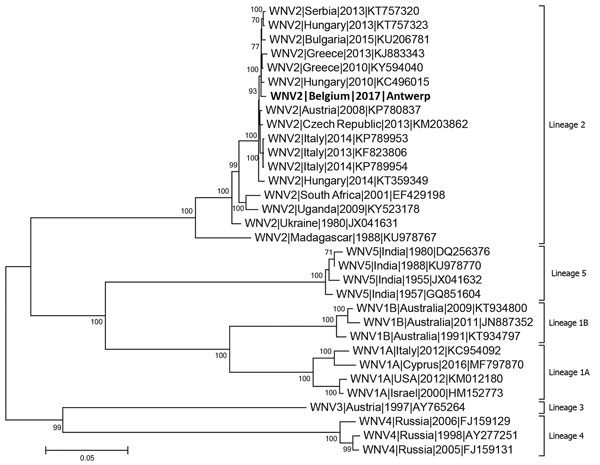Volume 24, Number 12—December 2018
Research Letter
Use of Next-Generation Sequencing for Diagnosis of West Nile Virus Infection in Patient Returning to Belgium from Hungary
Figure

Figure. Alignments of complete WNV genome identified from patient in Belgium compared with 32 known reference strains from the 5 established WNV lineages. A phylogenetic tree was constructed using the maximum-likelihood method based on the Tamura-Nei model. Evolutionary analyses were conducted in MEGA7 (http://www.megasoftware.net). Bootstrapping was conducted with 1,000 bootstrap replicates; only bootstrap values over 70% are shown. The phylogenetic tree clusters the strain from this patient together with other WNV strains from southeastern Europe in lineage II. The patient isolate, named WNV-2|Belgium|2017|Antwerp (GenBank accession no. MH021189), is most similar to a strain from Hungary. GenBank accession numbers are provided for reference isolates. Scale bar represents genetic distance.
1These authors contributed equally to this article.